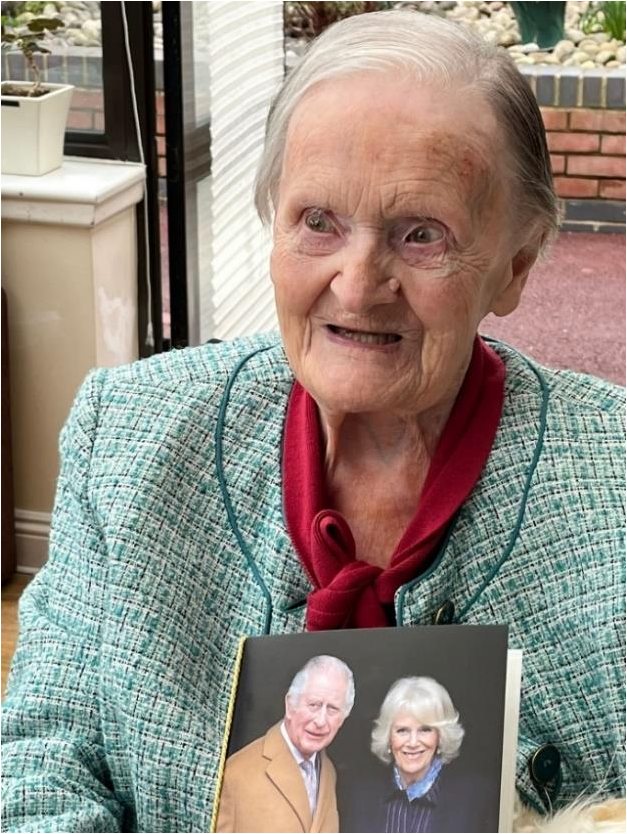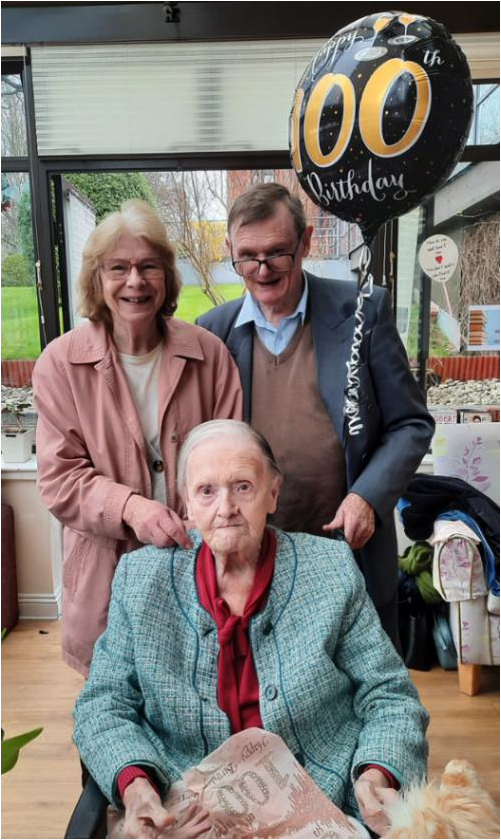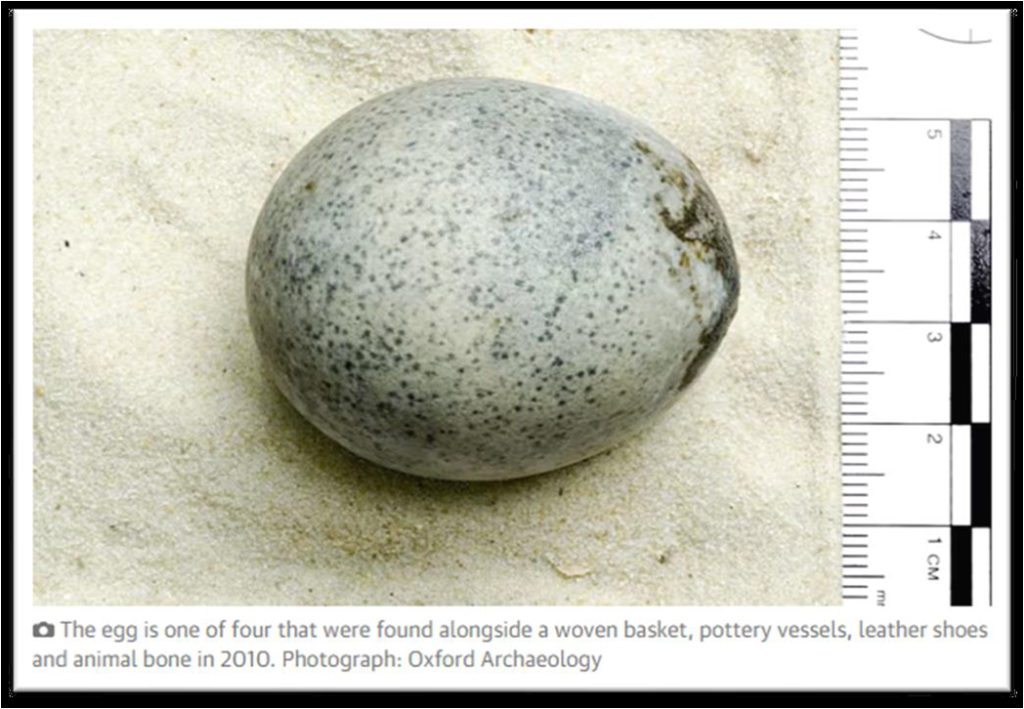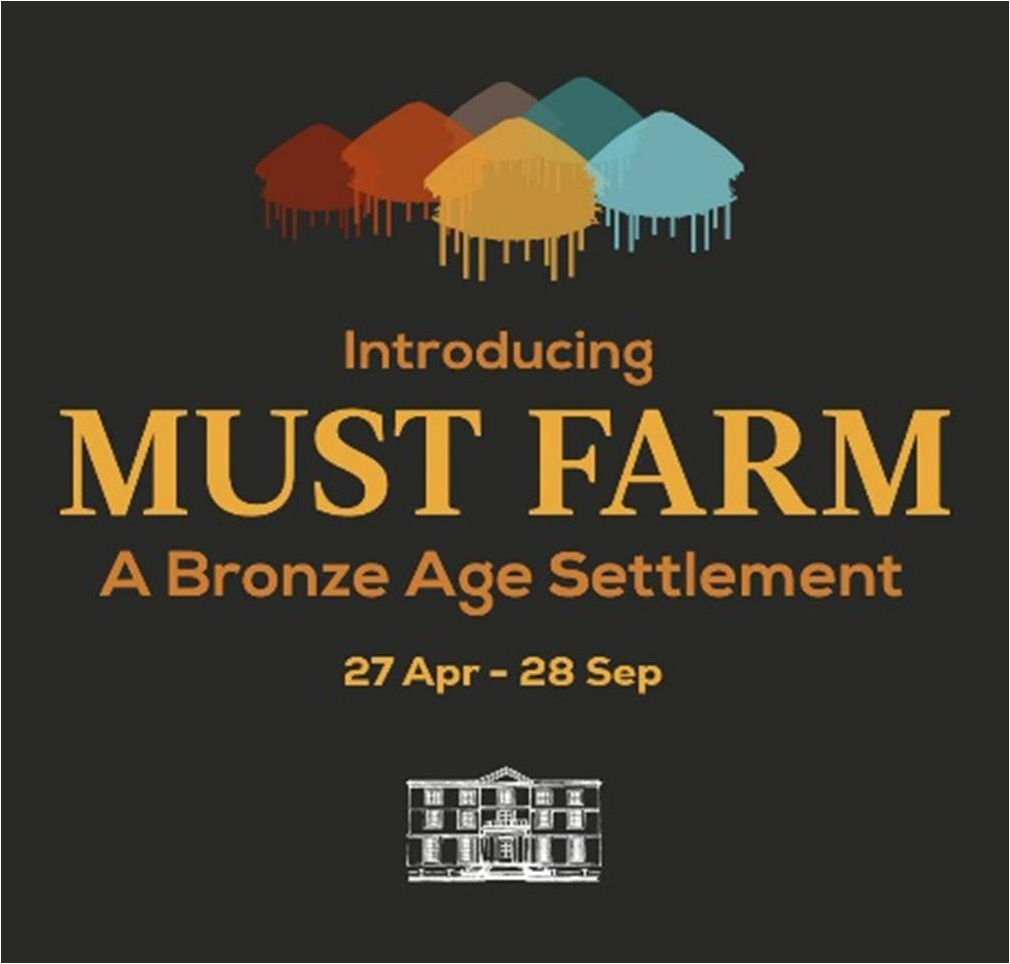
No. 637 April 2024 Edited by Sue Willetts
SUBSCRIPTIONS fall due on 1st April. The amounts are unchanged from last year – £15 for a full member plus £5 for an additional member at the same address. Full time students pay a reduced amount of £6. If you pay by standing order, you need do nothing.
It saves HADAS money if you pay directly online to our bank account. Our account is Sort Code 40-52-40 Account no. 00083254 in the name of Hendon and District Archaeological Society. Please show the description as “Subs” followed by your surname.
If you prefer to pay by cheque or cash, please send your payment to Jim Nelhams at the address shown on page 12 of this newsletter.
HADAS DIARY – Forthcoming Lectures and Events
Lectures are normally face-to-face, though lectures in winter may be on Zoom. Lectures are held in the Drawing Room, Avenue House, 17 East End Road, Finchley N3 3QE, 7.45 for 8pm.
Buses 13, 125, 143, 326 and 460 pass close by, and it is a five to ten-minute walk from Finchley Central Station on the Barnet Branch of the Northern Line. Bus 382 also passes close to Finchley Central Station. Tea/Coffee/biscuits available for purchase after the talk.
Tuesday 9th April 2024
Ian Jones, (Chair of Enfield Archaeological Society)
Traders, Bargees, Ferrymen and a Seagull: Life and Work in Roman Pisa.
Tuesday 14th May 2024
Owen Humphreys (Finds Specialist at the Museum of London Archaeology):
London’s Roman Tools.
Tuesday 11th June 2024
HADAS Annual General Meeting. Followed by a a talk by Jacqui Pearce: Clay Pipes.
Tuesday 12th September 2024
Wendy Morrison (Chilterns Heritage & Archaeology Partnership (CHAP):
Beacon of the Past Hillforts Project.
Tuesday 8th October 2024
TBA
Tuesday 12th November 2024
TBA
1
Update on the Highgate Roman Kiln Project Eric Morgan
Update from report in HADAS April 2023 newsletter. This is now known as the Firing London’s Imagination. The website has full details. All 21 sections of the Highgate Roman Kiln Project (a C2nd CE Romano-British kiln excavated in Highgate Wood) have been removed from the Wood and the store of Bruce Castle Museum. The careful process of conservation has now begun in the studio of the Natural Building Centre, Conwy, in Wales. In August 2024 a replica of the Highgate Roman Kiln will be built in Highgate Wood. Graham Taylor of Potted History. expert historic kiln builder will lead the programme. The first firing of the kiln is planned for 1st September 2024.
Sheila Woodward Jim Nelhams
Long serving members will remember Sheila Woodward, a member for many years. Sheila, with Tessa Smith, arranged a number of day-outings for Hadas. She also took part in a number of digs including West Heath. A resident of Stanmore, Sheila left Hadas before Covid, having moved because of her health into a home in Edgware.
Sheila was a churchwarden at St Lawrence, Little Stanmore, and a regular guide to visitors to the church, where in the past Handel regularly played the organ. One of our Christmas outings was to the church, where we were entertained by Finchley Chamber Choir singing some Handel anthems.
On March 21st, Sheila reached her one hundredth birthday, celebrated by a small gathering of family and friends. Sheila is well cared for in the home, though she has lost her mobility. Her memory of past activities including HADAS, but not more recent events, is good.
2
Aircraft manufacture at Duple Coachworks in Hendon Andy Simpson
At a recent London County Council Tramways Trust meeting, in a break from discussing our funding of various preserved London tram restoration projects, fellow Trustee Dave Jones, whose late father had served in Royal Air Force Bomber Command as a rear gunner in a Handley Page Halifax four-engined heavy bomber during World War Two, kindly brought in a wartime publication that he had recently acquired for me to see, as he knew I would be interested from both an aviation and local history perspective.
In 1925, Duple Bodies and Motors Ltd. moved from Hornsey to a new factory on The Hyde, West Hendon. After delays in completion of the large new factory which meant Duple workers replacing the original contractors in its construction, production began there in 1926. In 1934 the works expanded over the site of the adjoining villa, Cowleaze House and its garden, dating to around 1800. The site eventually covered 12 ½ acres.
Here they constructed single deck motor coach bodies in particular until they ceased operations at the Hyde in 1970 when the Head office there finally closed, having moved most of its operations to Blackpool in 1968 when the actual factory buildings were sold to industrial property developers Messrs. Ronald Lyon Estates (Who, along with their colourful chairman of that name, had a fascinating corporate history themselves…).
Dave Jones points out that as well as motor coaches, Duple had also built a few double deck buses, some goods vehicles, and had a contract with the GPO and built a large number of Post Office Royal Mail and Royal Mail Telephones vans.
The factory site was duly redeveloped into an industrial estate, and later became a new build Sainsbury’s superstore, which opened on 15 February 1994, with all traces of the former factory removed. This will shortly itself be demolished with a new store, scheduled to open later in 2024, incorporated into the lower level of one of the eleven high-rise apartment blocks of up to 28 stories (!) housing 1,309 flats currently being built on the whole site from 2020 as part of the ten-year Silk Park development.
The book itself is a glossy commemorative publication published in August 1945 just before the end of the war and intended for those who had worked on Halifax production, with many photos of the Halifax production process. Other copies do survive, with at least three in the collections of the RAF Museum.
For general technical and historical details of the Halifax, including illustrations, see;
Handley Page Halifax | Classic Warbirds
Handley-Page Halifax (airvectors.net)
Handley Page Halifax – Not Quite a Lancaster – PlaneHistoria
3
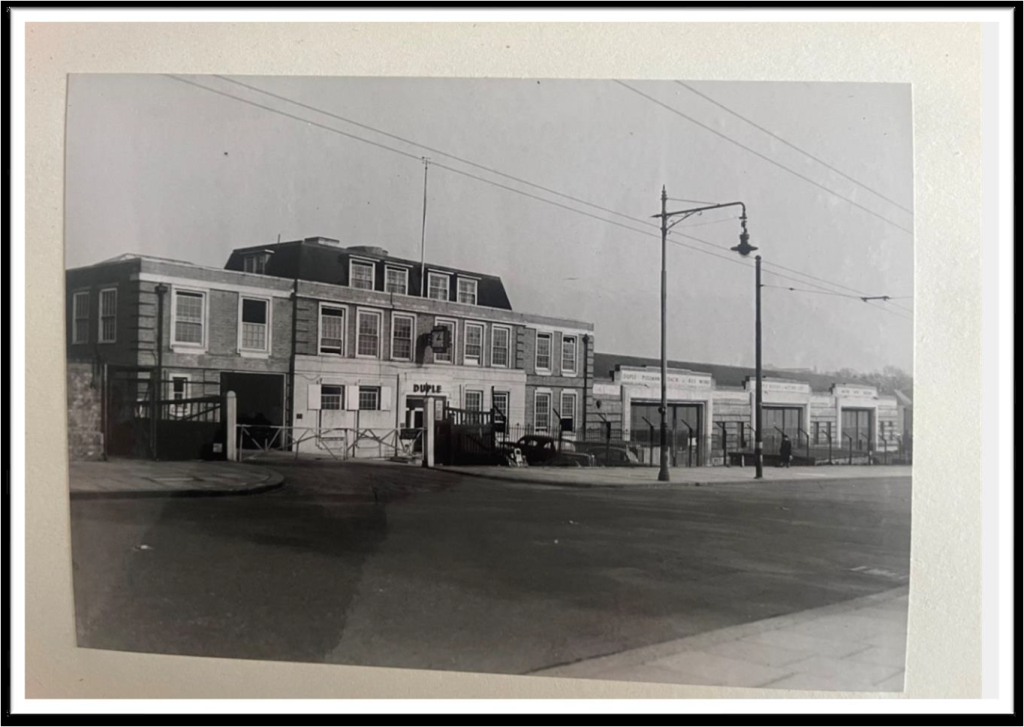
An excellent aerial view of the whole Duple site can be found here;
With a workforce of 1,000, Duple made a significant contribution to wartime bomber aircraft production; As part of the London Aircraft Production Group it produced 750 front fuselage sections (including all of those fitted to the LAPG’s 710 Halifaxes) in their Hendon works; a significant proportion of the 6,118 Halifaxes built, The L,A.P. Group at its peak employed 9,000 people, many of them women.
Serving with the RAF until 17th March 1952, latterly in the meteorological reconnaissance role based in Gibraltar, just four Halifaxes survive in whole or part today in museums in the UK and Canada. As part of the nationwide network of ‘Halifax Group’ sub-contractors – 41 factories in all- the L.A.P. Group consisted of the London Passenger Transport Board’s Aldenham Works (originally built prewar to serve the uncompleted Northern Line extension from Edgware via Brockley Hill to Elstree and where the Halifax sub- assemblies built elsewhere were assembled and tested prior to final test flying and delivery to RAF units from new facilities at the nearby Leavesden airfield, to where the parts were taken by road, the first, B Mk.II Serial No BB189, first flown on 8 December 1941- the day after Pearl Harbour- and delivered to the RAF on 10 January 1942).
4
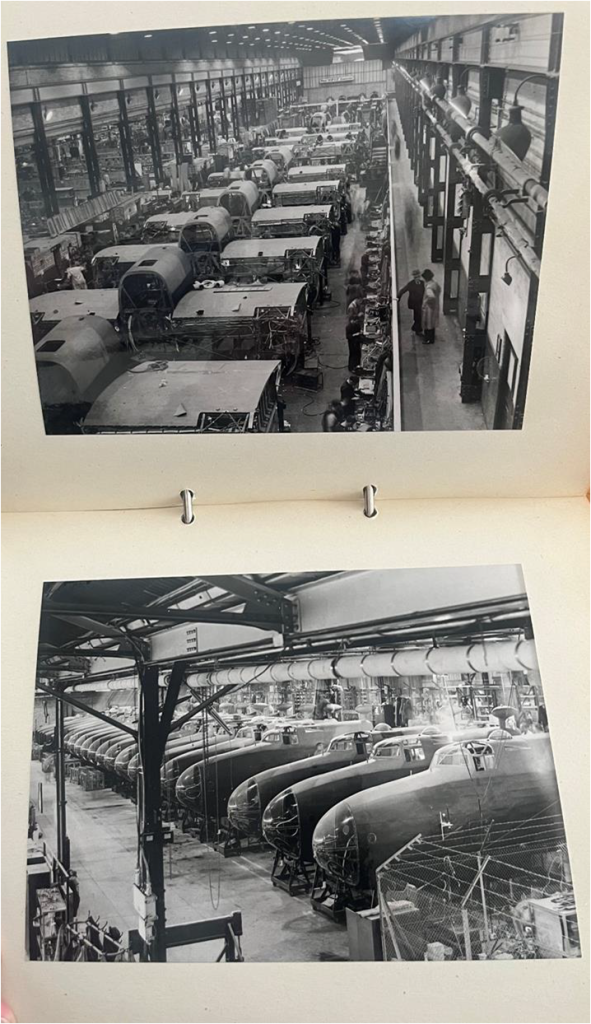
These would have been produced at Duple, Hendon.
5
Other companies involved were Park Royal Coach Works Ltd, Acton, The Express Motor and Body Works Ltd, Enfield, Chrysler Motors Ltd, Kew and Duple Bodies and Motors Ltd, Hendon. Established in 1940 under the direction of the Ministry of Aircraft Production, they delivered 450 of the Rolls Royce Merlin powered Halifax Mk. II aircraft and a further 260 of the Bristol Hercules radial powered Mk.III variant.
With the end of the war in sight and production contracts being cut back towards the end of the war, the LAPG delivered its last Halifax, a Mk.III, serial number PN460, on 16 April 1945. She was aptly christened ‘London Pride’ at a special ceremony and gave a seriously low-level flying display to the assembled VIPs as she departed!
On the 26th of November 2006, archaeologists from the Warsaw Uprising Museum in Poland, presented the remains of a Halifax (JP276 “A”) that was found in southern Poland, near the city of Dabrowa Tarnowska. It was shot down on the night of the 4th/5th of August 1944 whilst returning from the “air-drop-action” during the Warsaw uprising. This is particularly significant, as this is the first wreckage of a London Aircraft Production Group built Halifax, including its Park Royal Coachworks built parts, to have been recovered. For further details see: 342-London-Aircraft-Production-Group.pdf (rchs.org.uk).
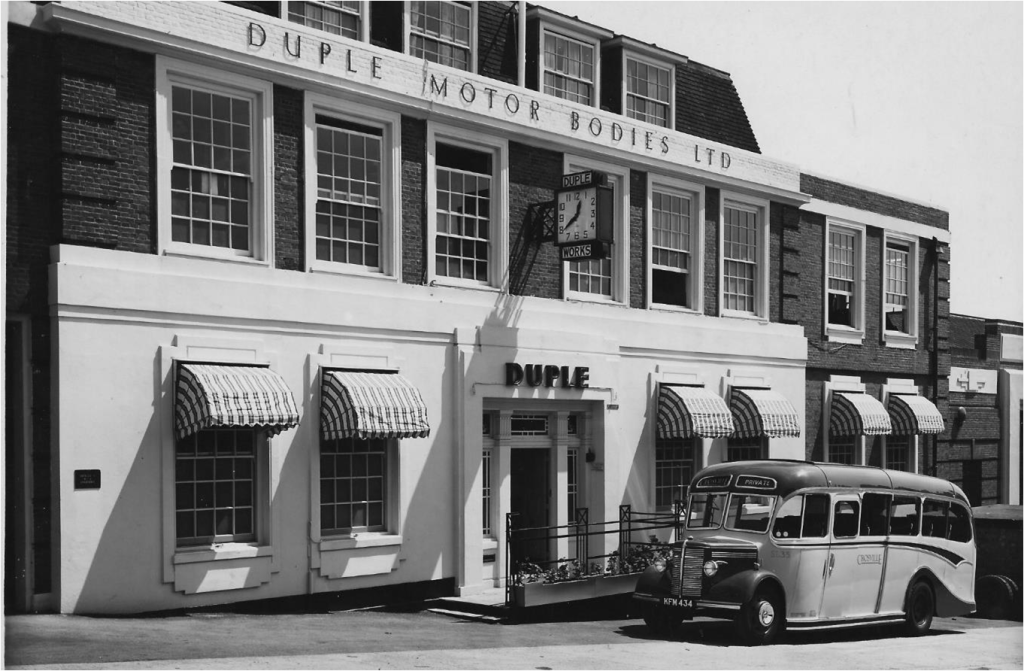
Duple official view, from the collection of Dave Jones to whom thanks for this and the picture details.
6
Musket balls solve mystery of ‘lost’ Civil War battlefield Stewart Wild
A seven-year search has identified the ‘lost’ site of an English Civil War battlefield, solving one of the conflict’s enduring mysteries. The discovery shows the Battle of Stow in Gloucestershire was fought nearly a mile from where Historic England believed the fighting took place. It follows five archaeological surveys by the Battlefields Trust charity and the re-examination of contemporary accounts of the struggle between Roundheads and Cavaliers. The Trust had long suspected that a stone monument put up by locals in 2002 to commemorate the battle near Stow-on-the-Wold was in the wrong place because of a lack of war relics on the site. Its latest survey by archaeologists and metal detectorists has unearthed dozens of 17th-century musket balls and powder caps from infantry and cavalry weapons in farmland half a mile from the town, proving that the battle was not fought at the site registered by Historic England, says the trust.
Trust research co-ordinator Simon Marsh said: “We’ve told them that this is where we think the battle was fought based on the evidence we’re providing. We recognise that it’s a big change to the current registration.”
The fighting, in March 1646, was the last major battle of the first Civil War between Charles I and Parliament. Roundhead forces caught up with the King’s last remaining army as it tried to link up with Charles thirty miles away in Oxford. The hour-long battle ended with the outnumbered royalist infantry retreating into the centre of Stow where the fighting continued.
One of the main streets “ran red with royalist blood”, according to local legend, before their commander, Lord Jacob Astley, was forced to surrender in the market square. Charles realised that the end was in sight and gave himself up soon afterwards to the Scottish army at Newark, Nottinghamshire, in May 1646.
It is not the first time that Britain’s battlefield maps have been redrawn. In 2016, a memorial stone at Battle Abbey in East Sussex marking the spot where King Harold was killed at the Battle of Hastings in 1066 was moved 20ft after experts decided it was in the wrong place.
SOURCE: Daily Telegraph, 14 January 2024, item edited by Stewart Wild.
7
A Roman egg found – during dig at a site called Berryfields in Buckinghamshire.
The site was excavated by Oxford Archaeology. Archaeologists and naturalists have been astonished to find a cache of 1,700-year-old speckled chicken eggs discovered in a Roman pit during a dig in Buckinghamshire. A scan has revealed that one of the eggs contains liquid – thought to be a mix of yolk and albumen. The “Aylesbury egg” is one of four that were found alongside a woven basket, pottery vessels, leather shoes and animal bone in 2010 as a site was being explored ahead of a major development. Unfortunately, three of the eggs broke, producing an unforgettable sulphurous smell, but one was preserved complete.
As Edward Biddulph, the senior project manager at Oxford Archaeology commented this is thought to be the only intact egg from the period in Britain. Dana Goodburn-Brown, an archaeological conservator and materials scientist, suggested they scan it to help decide how best to preserve it. Biddulph said the egg had been deliberately placed in a pit that had been used as a well for malting and brewing – a wet area next to a Roman road.
It may have been the eggs were placed there as a votive offering. The basket found may have contained bread. The egg has been taken to the Natural History Museum in London. Biddulph said it had felt a little daunting riding on the tube and walking around the capital with such an extraordinary and fragile egg in his care.
A tiny hole may be made in the egg to extract the contents and try to find out more about the bird that laid it. Goodburn-Brown said: “The egg ranks as one of the coolest and most challenging archaeological finds to investigate and conserve. Being the temporary caretaker and investigator of this Roman egg counts as one of the major highlights of my 40-year career.”
SOURCE: Guardian 12 February 2024, edited by Sue Willetts.
8
Newsletter Editors – appeal for volunteers (also contributors).
Please help your society by offering to be a compiler for one of our monthly newsletters. Contributions are sent to each editor by email not later than the middle of the month. The editor arranges them in a standardised format (4, 8 or 12 pages). This is then forwarded (in Word format) to Sue Willetts – and your job is done!
She creates a pdf copy for the printer, and a version for the webpage.
Jim Nelhams kindly emails the e-newsletter to members. Please send any expressions of interest to Don Cooper (Chair). Details on the back page.
The newsletter does not write itself, nor is the editor expected to write all the contributions. Relevant articles are welcome from all sources.
New Exhibition in Peterborough Museum – Introducing Must Farm, a Bronze Age Settlement. Sue Willetts
The exhibition funded by both Historic England and Peterborough Museum focuses on an introduction to the story of this significant Bronze Age site, dubbed “Britain’s Pompei” – an extraordinary insight into everyday life almost 3,000 years ago. The site is a pile-dwelling settlement in Whittlesey, Cambridgeshire.
9
The Must Farm settlement is a fascinating discovery, with the site only being occupied for under a year before it was destroyed by a catastrophic fire. The everyday objects found there are remarkable – rarely preserved personal items including textiles – some of the finest produced in Europe at that time.
Pots and jars complete with meals and utensils, and exotic glass beads – some of which were manufactured in the Middle East revealing a sophistication not normally associated with the Bronze Age.
The museum is a 6 minute walk from Peterborough Station. It is open Tuesday to Saturday 10.00 – 16.00 and is Free to visit. Peterborough Museum & Art Gallery, Priestgate, Peterborough, PE1 1LF. More information from website – link below.
Introducing Must Farm, a Bronze Age Settlement- Museum & Art Gallery (peterboroughmuseum.org.uk).
Other Societies’ Events Eric Morgan
Note: Not all Societies or organisations have returned to pre-Covid conditions. Please check with them before planning to attend.
Friday 12th April, 7.30 pm. Enfield Archaeological Society, Jubilee Hall, 2, Parsonage Lane / Junction Chaseside, Enfield, EN2 0AJ. Fieldwork of the Society/Preceded by the AGM. Talk by Dr. Martin Dearne. Please visit www.enfarchsoc.org for further details. Non-members £1.50 at door. Refreshments.
Tuesday 16th April, 2.00-3.00 pm. Eclectic Tours. Headstone Manor Museum, The Granary, Pinner View, North Harrow, HA2 6PX. 100 Years of Proscenium Theatre. Talk by Mark Sutherland. Covers 100 years of history of theatre including highlights from the exhibition on at the museum. £2.50. Please book on www.headstonemanor.org/events/tuesday-talk.
Friday 19th April, 7.00 pm. COLAS, St Olave’s Church, Hart Street, London. EC3R 7NB. Talk also on Zoom. Who was Frederick? And Other Stories. Excavations at Frederick’s Place in the City. Results from a multi-phase site on land belonging to the Mercers’ Company – talk by Alison Telfer (MOLA). Please book via Eventbrite. Visit www.colas.org.uk. HADAS may send out the link details to its members.
Friday 10th May, 7.30 pm. Enfield Archaeological Society. Jubilee Hall, address as above. Roman and Bronze Age Finds in Walthamstow. Talk by Shane Maher (P.C.A), Website details above. Visitors £1.50.
Monday 13th May, 7.30 pm. Barnet Museum and Local History Society. (Please note later time). St John the Baptist Church, Chipping Barnet, Corner High Street, Wood Street, Barnet EN5 4BW. The De Haviland Air Museum. Talk by Chris Levitt. Please visit www.barnetmuseum.co.uk for details.
Tuesday 14th May, 6.30 pm. LAMAS joint with Prehistoric Society – Talk on Zoom. Paleo-London – Thinking about the Ice Age Archaeology and Environments of the Capital. By Dr. Matt Pope. Details on Eventbrite. Booking essential on www.lamas.org.uk/lectures.html. Non-members. £2.50.
10
Wednesday 15th May, 6.00 pm – 7.30 pm. This year’s UCL Institute of Archaeology Gordon Childe Lecture, to be given by Richard Bradley (Emeritus Professor, University of Reading) Hidden valuables: hidden variables. Hoards and other deposits from Mesolithic to modern times. This in-person event is ticketed, with pre-booking essential. Use the link below. https://www.ucl.ac.uk/archaeology/events/2024/may/ucl-institute-archaeology-gordon-childe-lecture-2024.
,Wednesday 15th May, 7.30 pm. Willesden Local History Society., St Mary’s Church Hall, Bottom of Neasden Lane (Around corner from Magistrates Court), NW10 2DZ. The Mercenary River. Talk by Nick Higham on The story of London’s water supply through the centuries. Please visit www.willesden-local-history.co.uk for further details.
Friday 17th May, 7.30 pm. Wembley History Society. St Andrew’s Church Hall (behind St. Andrew’s new church) Church Lane, Kingsbury, NW9 8RZ. The Story Behind the Song. Talk by Terry Lomas and Alan Richardson. Give an evening’s entertainment and discover the origins of some old familiar songs. Visitors £3. Refreshments in the interval.
Wednesday 22nd May, 7.45 pm. Friern Barnet and District Local History Society. North Middlesex Golf Club, the Manor House, Friern Barnet Lane, London. N20 0NL. House of Commons – ‘Stage Sets – Props – Symbols’. Preceded by AGM. Talk by Barry Hall. Please visit www.friernbarnethistory.org.uk. Non-members. £2. Bar Available.
Thursday 23rd May, 8.00 pm. Heath and Hampstead Society. Rosslyn Hill Chapel, 3, Pilgrims Place, London. NW3 1NG. Hampstead Historical Treasures in the Collections of Camden Studies. Local Archives Centre. 2nd Hunter Davies Lecture given by Tudor Allen (Archives Manager). Tickets available for non-members via Eventbrite for £15. Also on Zoom. E-mail info@heathandhampstead.org.uk for link.
****************************************************************************************************With many thanks to this month’s other contributors: Eric Morgan; Jim Nelhams, Andy Simpson. Stewart Wild.
****************************************************************************************************
11
Hendon and District Archaeological Society
Chairman Don Cooper, 59, Potters Road, Barnet EN5 5HS (020 8440 4350)
e-mail: chairman@hadas.org.uk
Hon. Secretary Janet Mortimer, 34, Cloister Road, Childs Hill, London NW2 2NP
(07449 978121) e-mail: secretary@hadas.org.uk
Hon. Tresurer Roger Chapman, 50, Summerlee Ave, London N2 9QP (07855 304488)
e-mail: treasurer@hadas.org.uk
Membership Sec. Jim Nelhams, 61, Potters Road Barnet EN5 5HS (020 8449 7076)
e-mail: membership@hadas.org.uk
Website at: www.hadas.org.uk – join the HADAS email discussion group via the website.
______________________________________________________________________________________________________________________________________
12

